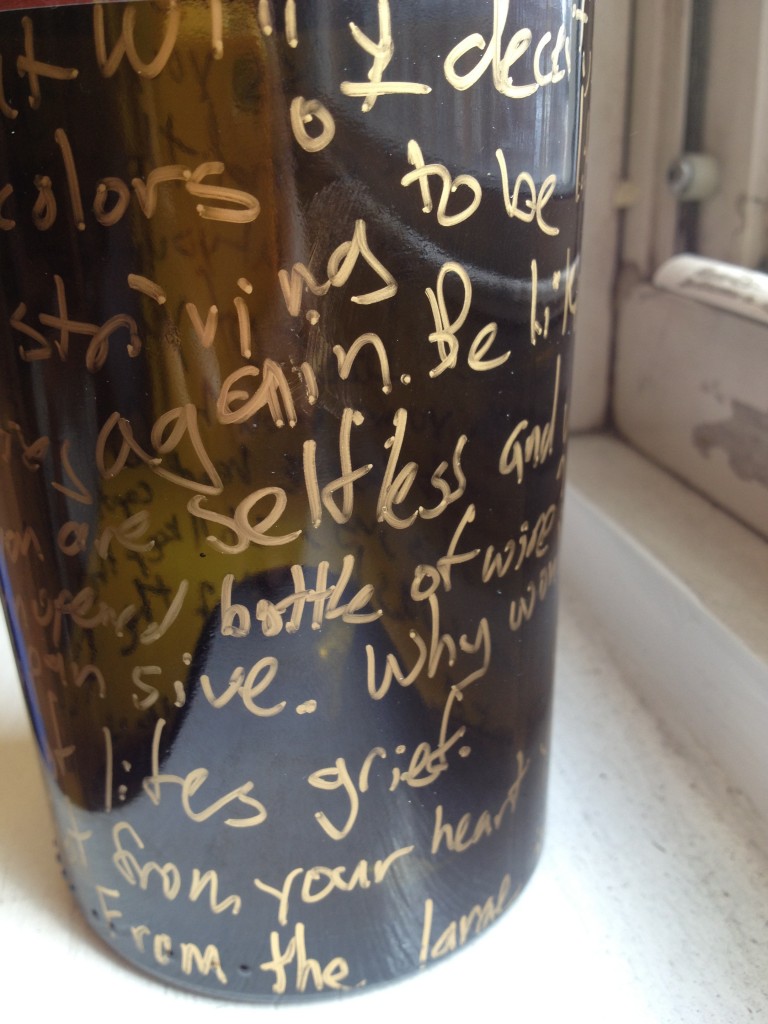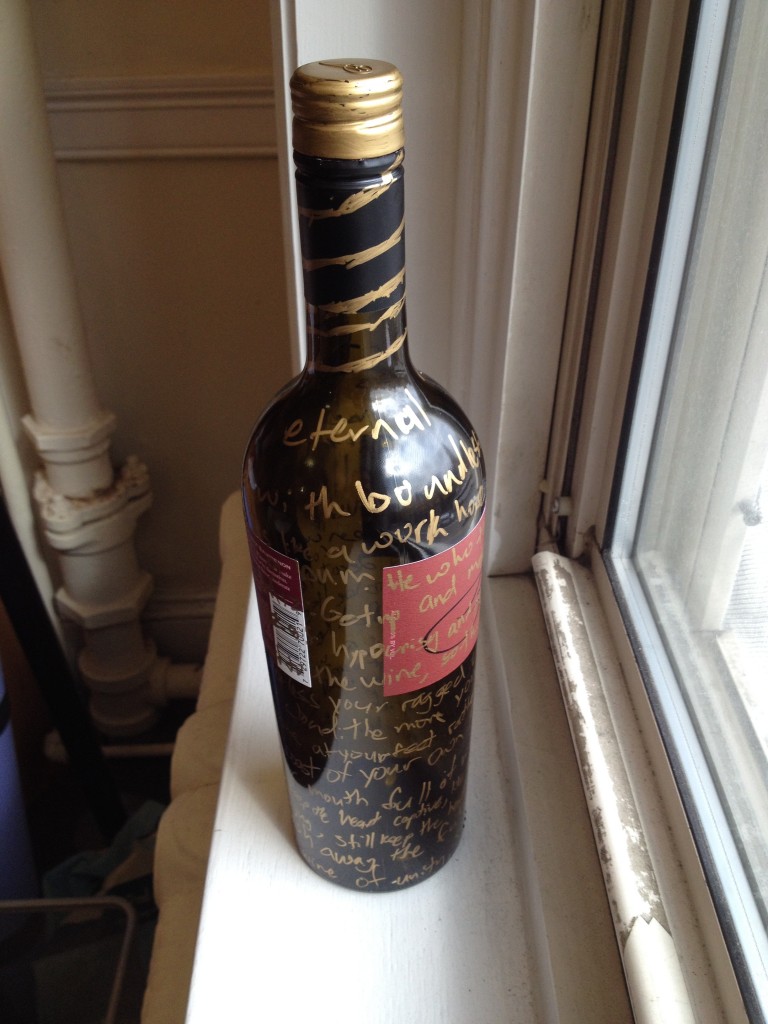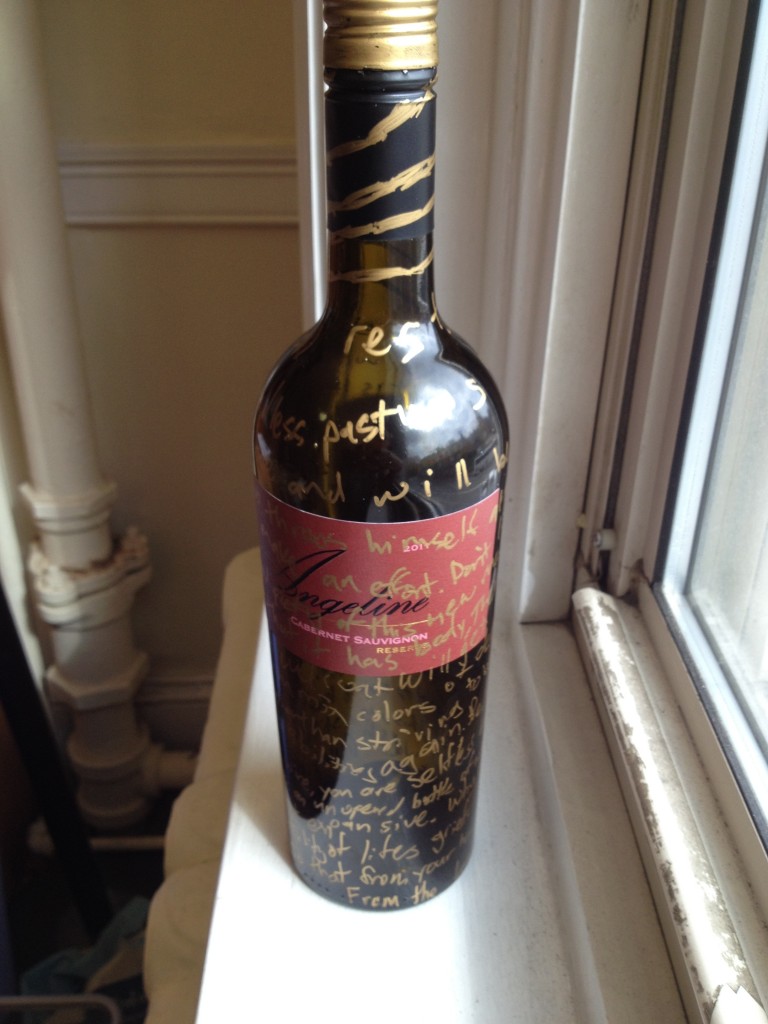From the Large Jug, Drink by Khwāja Shams-ud-Dīn Muhammad Hāfez-e Shīrāzī
From the large jug, drink the wine of Unity,
So that from your heart you can wash away the futility of life’s grief.
But like this large jug, still keep the heart expansive.
Why would you want to keep the heart captive, like an unopened bottle
of wine?
With your mouth full of wine, you are selfless
And will never boast of your own abilities again.
Be like the humble stone at your feet rather than striving to be like a
Sublime cloud: the more you mix colors of deceit, the more colorless
your ragged wet coat will get.
Connect the heart to the wine, so that it has body,
Then cut off the neck of hypocrisy and piety of this new man.
Be like Hafiz: Get up and make an effort. Don’t lie around like a bum.
He who throws himself at the Beloved’s feet is like a workhorse and will
be rewarded with boundless pastures and eternal rest.
From: Drunk on the Wine of the Beloved
Translated by Thomas Rain Crowe
A ghazal is a poem consisting of couplets that are autonomous though relate in a greater idea. They also have a repeating refrain as well as rhyming in the second lines of all stanzas and also in the first stanza. These poems are often about love or unattainable love and, in a Muslim context, refer to the divine. One popular ghazal poet is Hafiz who uses beautiful imagery to portray the beauty of the prophet and his insatiable love in such esoteric ways. One of these common symbols used is the idea of intoxication and wine.
In the chapter I”ntroduction to the Conventions of the Urdu Ghazal” of Assembly of Rivals, Pietievich states, “wine imagery serves two purposes: first, on the majadzi or metaphorical level it signifies that an ashiq is so enamored of the beloved that he will commit grievous sins to prove his love…Wine imagery also lends itself to haqiqi or mystical themes in the ghazal…[and] represents mystical wisdom and guidance along the path leading to ultimate intoxication, i.e. union with the Divine” (7). The wine imagery is used to show the Divine as an ultimate intoxicant that makes you physically feel as if you have injested alcohol. Ecstasy is also discussed in association with many different art forms such as recitation and this connects to that idea of being overwhelmed and taken over by the aspects of God.
I tried to make a representation of this idea of wine being used to show this illumination and awakening of the soul as well as the love that fills people in connection to the Divine. I took a poem by Hafiz that I was very moved by and focused specifically on this idea. Though it is a translation and does not contain the rhyming, it still is very beautiful and follows the themes of ghazals. I started at the bottom of an empty wine bottle and wrote out the whole poem. I used gold ink to show this illumination as when you look at this bottle in the light, the text shines off of it. I started at the to show this ascension to a divine love. This poem seems to have an arch where at the end he states, “He who throws himself at the Beloved’s feet is like a workhorse and will be rewarded with boundless pastures and eternal rest.” He seems to tell people to open themselves up to this wine/love and spiritual transformation that God brings if you are humble and selfless. At the lip of the bottle, after the poem, I made a spiral up to the cap which I colored with the gold to represent this divine level and a full spiritual transformation. The poem spirals all the way up the bottle just like an awakening that one feels when reading these beautiful poems. 

